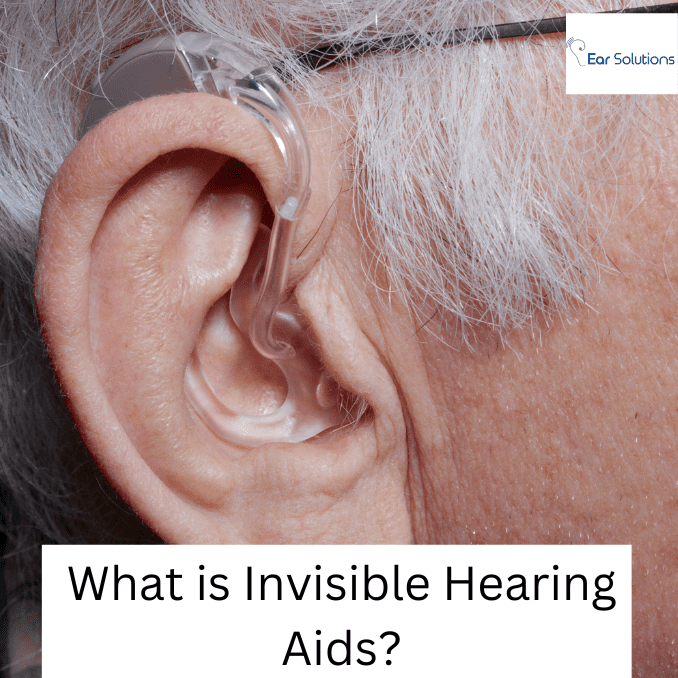Hearing loss is a common problem that affects millions of people worldwide. Hearing aids have been used for decades to help people with hearing loss to communicate effectively and improve their quality of life. However, traditional hearing aids are often bulky, uncomfortable, and visible, which can be a source of embarrassment for some people. Invisible Hearing Aids are one of the best hearing aids for those who wish to have convenient hearing aids.
Invisible hearing aids are a relatively new type of hearing aid that has been designed to address this issue. In this blog post, we’ll explore what invisible hearing aids are, how they work, and the advantages and disadvantages of using them.
What are invisible hearing aids?
Invisible hearing aids are a type of hearing aid that is designed to be invisible or nearly invisible when worn. They are also called “invisible in the canal” (IIC) or “completely in the canal” (CIC) hearing aids because they sit inside the ear canal and are almost completely hidden from view.
Invisible hearing aids are custom-fitted to the user’s ear canal, which means they are very small and discreet. They are typically made from medical-grade silicone or acrylic and are available in a range of skin tones to match the wearer’s skin.
How do invisible hearing aids work?
Invisible hearing aids work in a similar way to other types of hearing aids. They amplify sound waves and deliver them to the inner ear, where they are converted into electrical signals that the brain can understand.
Invisible hearing aids have a microphone, an amplifier, and a speaker, just like traditional hearing aids. However, because they are smaller and sit inside the ear canal, they have some limitations. For example, they may not be suitable for people with severe hearing loss or for those who need a lot of amplification.
Invisible hearing aids also have some additional challenges. Because they are so small, they may be more prone to feedback (whistling) or occlusion (feeling blocked up) than larger hearing aids. They may also require more frequent cleaning and maintenance to keep them working properly.
Advantages
The main advantage of invisible hearing aids is their discreetness. They are virtually invisible when worn, which can be a significant advantage for people who feel self-conscious about wearing hearing aids. They are also more comfortable to wear than traditional hearing aids because they do not sit behind the ear, which can be uncomfortable for some people.
Invisible hearing aids are also suitable for people with mild to moderate hearing loss, which is the most common type of hearing loss. They are custom-fitted to the wearer’s ear canal, which means they provide a more natural listening experience than one-size-fits-all hearing aids.
Disadvantages
The main disadvantage of invisible hearing aids is their size. Because they are so small, they may not be suitable for people with severe hearing loss or for those who need a lot of amplification. They may also be more prone to feedback or occlusion than larger hearing aids.
Invisible hearing aids are also more expensive than traditional hearing aids. Because they are custom-fitted to the wearer’s ear canal, they require more time and expertise to manufacture, which adds to the cost.
Another disadvantage of invisible hearing aids is that they may not have as many features as larger hearing aids. For example, some invisible hearing aids do not have directional microphones, which can make it harder to hear in noisy environments.
Who are invisible hearing aids suitable for?
Invisible hearing aids are suitable for people with mild to moderate hearing loss who want a discreet hearing aid. They are also suitable for people who have cosmetic concerns about wearing hearing aids.
However, they may not be suitable for everyone. People with severe hearing loss or those who need a lot of amplification may be better suited to larger hearing aids. Similarly, people who have difficulty inserting and removing small objects from their ear.





